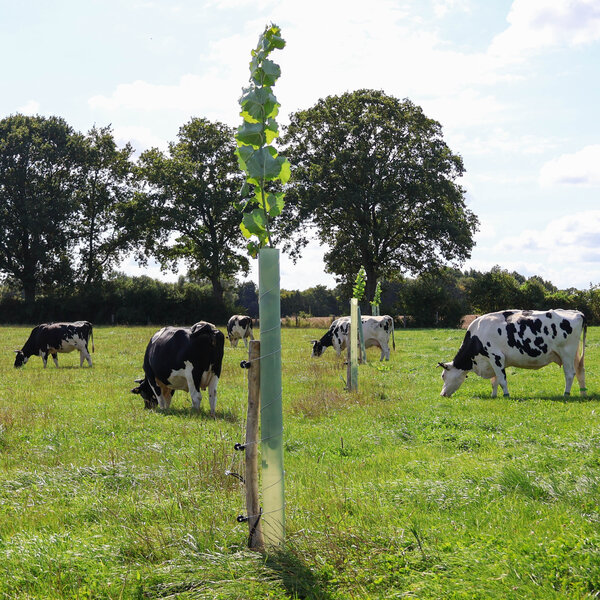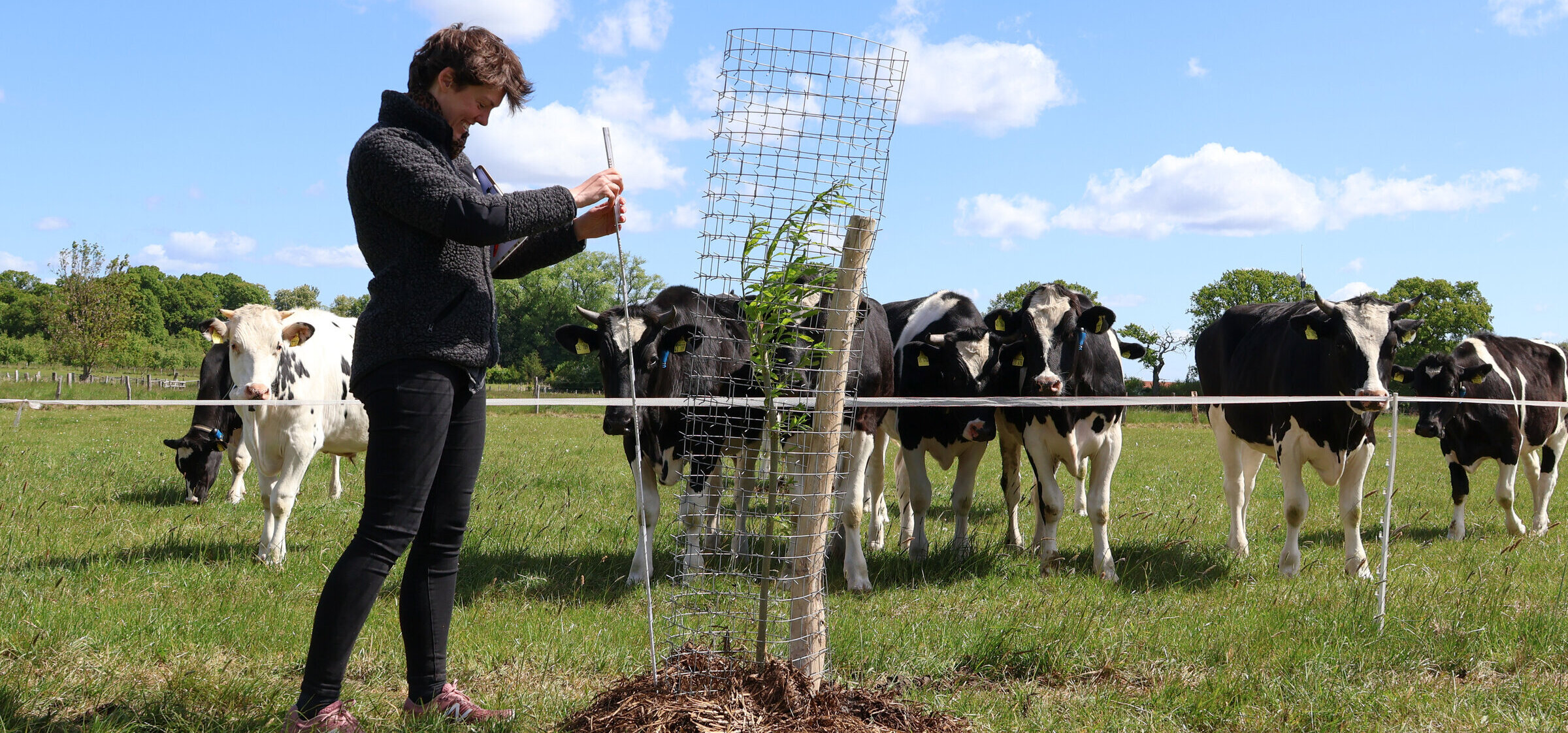Calves under fruit trees, chickens in hedges – this is not a village idyll, but rather a picture of a land use system of the future. The combination of trees and animals on grazeable arable and grassland areas is a possible strategy for adapting to climate change. An important side effect: carbon is stored and farmers tap into new sources of income. The EiLT is very keen on this.

"We should not wait until it becomes too hot and dry on our meadows and fields to keep animals outside. We must seek solutions now to enable grazing and outdoor husbandry to continue in the future. Trees and hedges on pasture land are a promising approach. Therefore, such systems must be examined more closely as a matter of urgency."
Dr Friederike Fenger, Project Coordinator

Drought and heat primarily affect pasture farming: animals not only suffer from the heat, but their food supply is also at risk. So-called agrosilvopastoral systems, i.e. the combination of trees and animals on grazable arable and grassland areas, are being discussed as a possible solution. Not only because the trees mitigate the effects of heat and the foliage can provide additional food, but also because the mixed-use areas could also act as carbon sinks, offsetting greenhouse gas emissions from agricultural production, promoting biodiversity and enabling beneficial insects to change habitats seasonally. The mixed-use areas could also act as carbon sinks, offsetting greenhouse gas emissions from agricultural production, promoting biodiversity, enabling beneficial insects to change habitats seasonally and, in the best case scenario, providing additional income for farms. However, the interactions between these areas, which are no longer strictly separated between agriculture and forestry, are uncharted scientific territory in Germany. There have been no long-term trials of agrosilvopastoral systems in Germany to date.
Various plantations are now being established in Trenthorst to find out, for example, what effects different tree and shrub species have on soil, plants, animals, biodiversity and arable farming in a combined system. However, grazing of existing wooded structures with chickens is also being investigated in order to use the land more efficiently. Another key aspect of the study will be the type and use of the plantations. In Trenthorst, for example, experiments are being conducted with so-called curly maple and curly birch, which are sought-after woods for musical instrument making, among other things. Extending the useful life of wood also has a significant effect on the climate: carbon is bound for longer.

